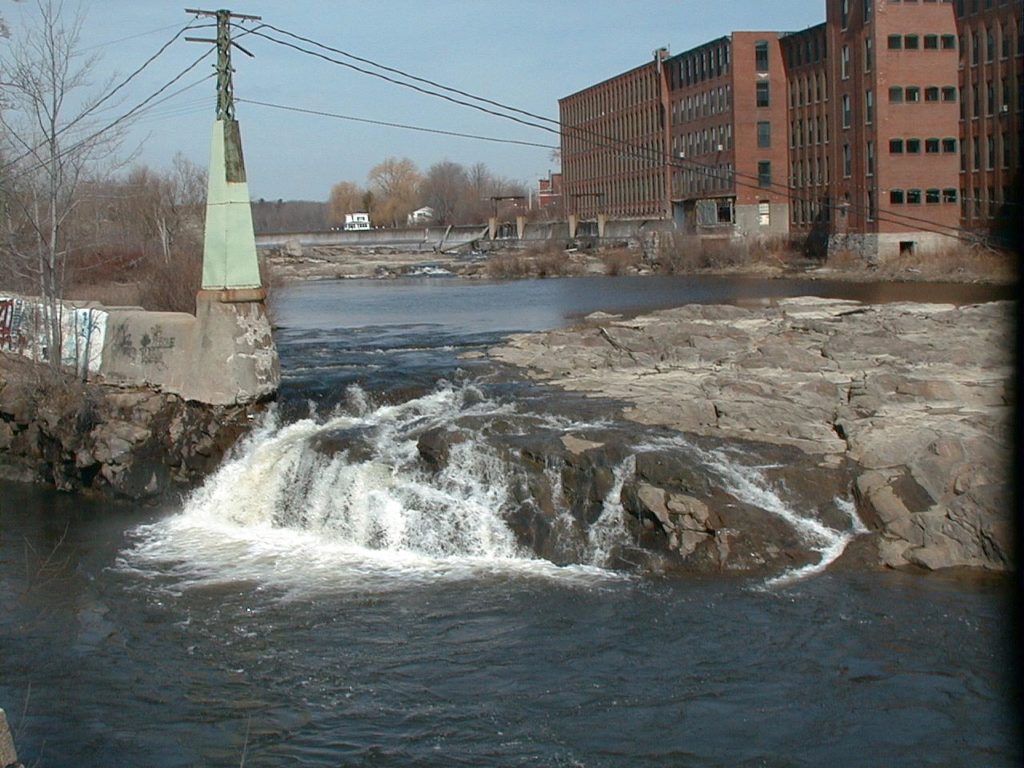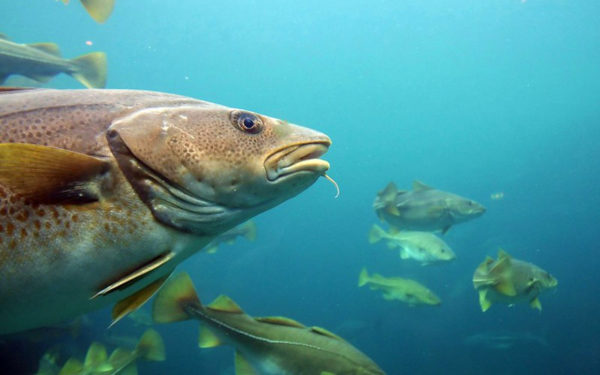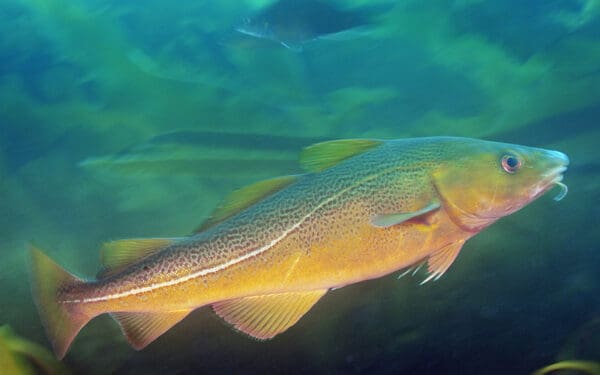
On the Presumpscot River, CLF worked to remove dams at Saccarappa Falls, opening the river to keystone fish species and helping to restore their populations. Photo: CLF
They say that robins are harbingers of spring, but up in Maine, river herring – the collective term for alewives and blueback herring – are the true signs of the changing season. They spend the majority of their lives in the ocean, but come spring, they battle their way upriver to spawn in the freshwaters where they were born.
Over the next couple of months, you’ll be able to observe alewives and blueback herring as they once again make their way up our coastal rivers. These annual runs are spectacles to behold – especially when fish launch themselves over rocks and fallen tree branches to achieve their purpose.
It is critical to the survival of river herring that they are able make this annual pilgrimage to their native freshwaters to spawn. But thousands of dams, large and small, built over the last 250 years have cut these fish off from thousands of acres of freshwater bodies, thwarting reproductive cycles that had been ongoing for eons. The impact of these dams, on top of threats from pollution and overfishing, have led to a drastic decline in river herring populations – threatening their survival.
Restoring river herring benefits a wide variety of species – including people
Making sure river herring reach their spawning waters isn’t just important for the survival of one species, however. In fact, these fish are so important to the entire ecosystems that they’re referred to as keystone species – in other words, they hold the ecosystem together by providing a crucial food source that sustains many larger animals. Other species linked to the success of river herring include cod, salmon, and striped bass, as well as bald eagles, osprey, and other predatory birds. They’re also a key bait fish used by lobstermen.
Efforts to restore river herring are showing results
Restoring access to native habitat for these species is a time-consuming and uphill battle, with lots of moving pieces and lots of players.
At the federal level, the Federal Energy Regulatory Commission, the U.S. Fish and Wildlife Service, Environmental Protection Agency, National Marine Fisheries Service, and the Army Corps of Engineers all have a role.
In Maine, the Department of Environmental Protection, Department of Marine Resources, and Department of Inland Fisheries and Wildlife all play a part, as well. So, too, do towns, private dam owners, utilities, and industry.
River restoration efforts – which can mean dam removal or enhancement or installation of fish passage facilities – often implicate recreational and commercial fishermen, Maine’s tribes, property owners who’ve grown used to the impoundments created behind the dams, and whitewater enthusiasts. And, of course, groups like CLF are involved.
While it’s often a long-term project and can take several generations to see improvement in fish numbers, the results are well worth the effort. Consider Maine’s St. Croix River: A population of 2.5 million alewives in the 1980s plummeted to barely 900 in 2002. CLF and our partners worked to restore the river’s working fish ladder and, in 2013, alewives began returning to their spawning grounds upriver. By mid-2017, more than 116,000 fish had already made the run up and over the St. Croix’s Milltown dam fishway to their native spawning waters – the most fish to do so since 1996.
The work is far from done!
CLF has long been involved in the fight to restore our native fish species’ access to New England’s lakes, ponds, and streams. We’ve worked through state and federal licensing proceedings, lawsuits, legislation, and cooperative negotiations to remove or modify man-made obstacles blocking fish from returning to their native waters. We’ve worked at the federal level, at the state level, and with towns and private dam owners.
There’s still lots to be done, and CLF will continue leading the way and pushing the envelope on new approaches.



